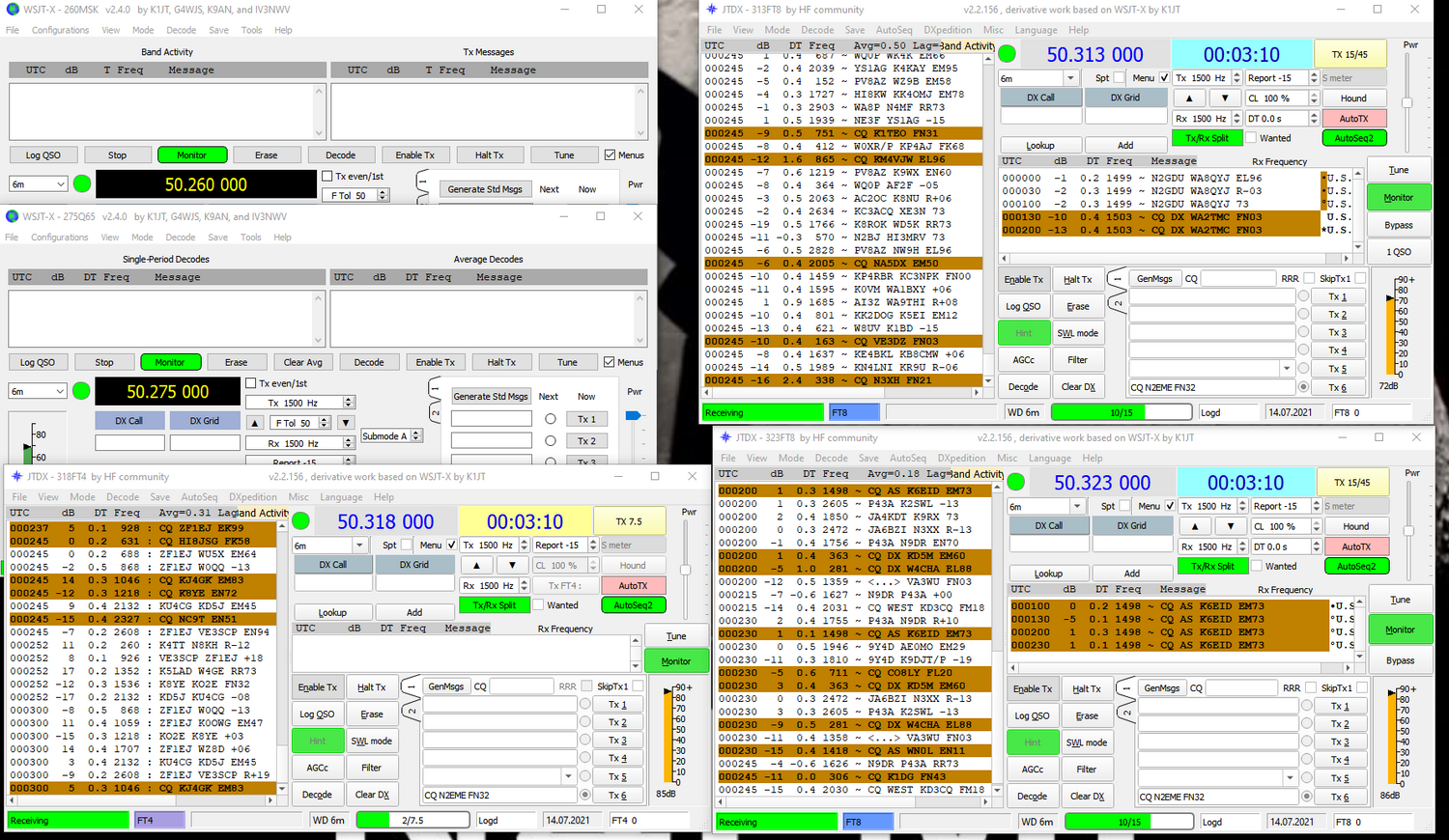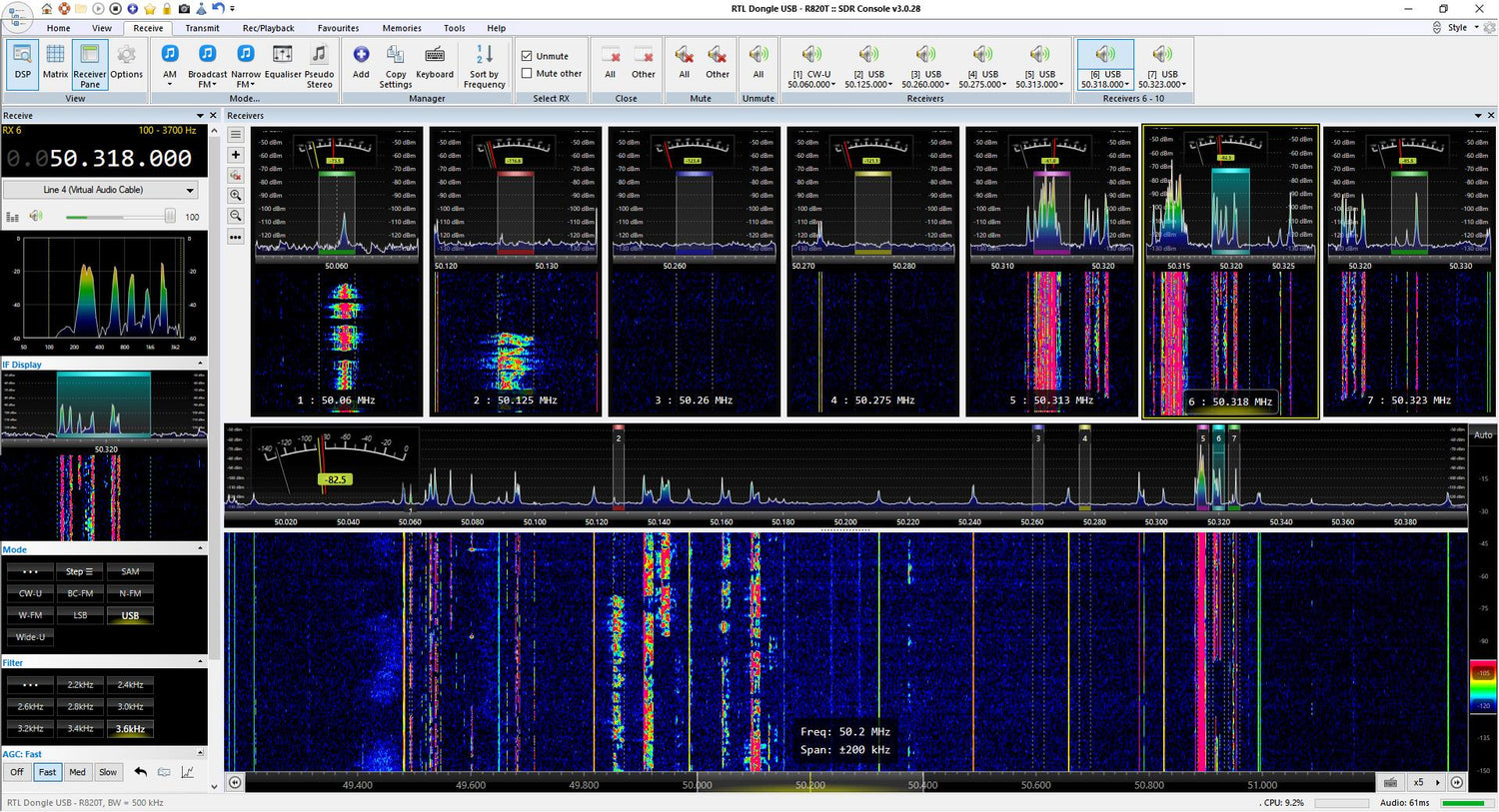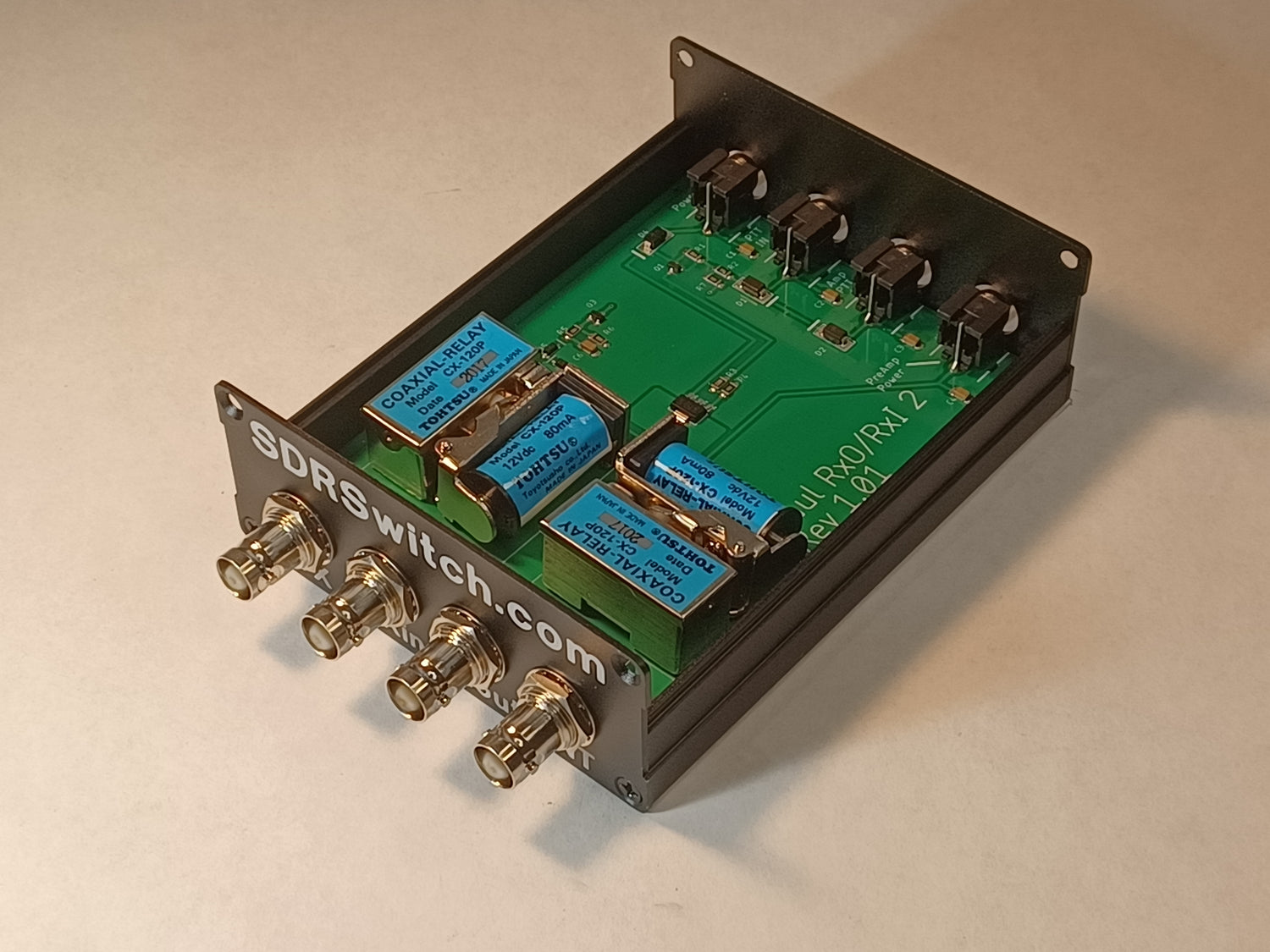We ship from USA -EU-UK. Shipping to Canada and many other countries from the EU.
Featured products
-
0-450MHz 100W RXin RXout SDR Switch.
Regular price $299.00 USDRegular priceUnit price per -
0-450MHz 100W SDR Switch.
Regular price $219.00 USDRegular priceUnit price per -
0-70MHz 100W RXin RXout SDR Switch.
Regular price $229.00 USDRegular priceUnit price per -
Receive Only Antenna TX/RX Switch
Regular price $179.00 USDRegular priceUnit price per -
SDR Switch 0-70 MHz 100W
Regular price $179.00 USDRegular priceUnit price per
-
 EHAm Review link
EHAm Review linkRead reviews from real buyer.
-

AVAILABLE IN THE UK FROM ML&S Including the new Receive Only Antenna Switch.
Martin Lynch and Sons -
 Eham Review link
Eham Review linkRead reviews from real buyers

Why should I upgrade to an SDR RX?
We are all looking for ways to improve our station. We all want to make our station receive better. The easiest way to achieve this is with an SDR receiver.
Imagine decoding the entire band at once. Not only seeing the entire band, a Panadapter, but also decoding the entire band at once. Even the bottom of the range SDR RXs are probably better RXs than your current transceiver.
SDRSwitch.com products are designed to have the lowest Insertion Loss and VSWR of any SDR Switch on the market. For help understanding the VNA sweep pictures please click here. They are the only SDR Switches designed by Weak Signal VHF/EME operators for use on HF, 50MHz, 70MHz, 144MHz, 222 MHz, 432 MHz and even above without causing serious degradation to an already weak signal.
Your old 3KHz wide rig will feel like a Black and White TV once you experience the Technicolor world of SDR.
But I still need to transmit.
SDRSwitch.com low insertion loss products are designed to allow the HF DX'er and VHF weak signal operator to integrate the latest SDR receivers with their current transceiver. The following pages will help you choose and setup your Hybrid station. One phrase you will read often is "Insertion Loss Matters". It may well be the most important measurement when choosing your SDR Switch.

Why do I need an SDR Switch?
Having the best RX in the world will not help you work anyone if you cannot transmit. Integrating a low loss SDR Switch will allow you to RX on your SDR RX whilst transmitting on your current transceiver. Not only will an SDR Switch protect both your transceiver and SDR RX, but it will also provide protection for other components in your RX chain such as your Pre Amp (LNA) and Band Pass Filter.
SDRSwitch.com offer two different switches for both the 0-70 MHz frequency range and for the 0-450 MHz frequency range.
Your first option is the SDRSwitch. This will allow you to integrate your transceiver for TXing whilst RXing on your SDR RX. In order to keep the insertion losses to a minimum the SDRSwitch does not RX on both your SDR and your transceiver. The SDRSwitch setup page shows you several options on how you can install your SDRSwitch.
The RXin RXout Switch not only can be setup exactly the same way as an SDRSwitch, but also allows you the option of RXing on both your SDR RX and your current transceiver. This can be achieved with the insertion of a 2 way power divider of your choice. Obviously this introduces a minimum of a 3dB loss into your RX chain. On VHF this can be compensated for by your LNA. There are multiple setup options for the RXin RXout many of these ideas can be found on the RXin/RXout setup page.
One of the design parameters for the RXin RXout switch was to replace the ARR range of 160W LNAs which are sadly no longer in production. The rear panel of the RXin RXout has a switched 12VDC supply for your LNA. 12VDC will be supplied to your Pre Amp during RX, but removed on TX adding a further layer of protection to both your LNA, SDR and your entire RX chain.

Which SDR Switch?
When choosing your SDR Switch there are 3 main parameters to consider. These will set the performance level of your station, both on TX and RX, for your desired frequency range.
Insertion Loss.
This is how much signal you will lose by inserting your SDR Switch inline for any given frequency. This will always be a negetive number measured in dBs. The closer to 0dB the better your SDR RX will perform.
Return Loss/VSWR
This one is the easy one to understand. With modern transceivers we all aim to have a VSWR of 2:1 or less. Ideally far less, as this effects the performance of both your TX and RX. Return Loss, is quoted as a negative number measured in dBs and is just another way of measuring your VSWR. Return Loss is shown on a VNA sweep as S21 Gain when measuring the VSWR. It will always be a negative number. Ideally you are looking for a VSWR under 1.5:1 measured on a VNA or into a dummy load.
Isolation.
Quite simply this indicates how much RF power is sneaking past your relays and into the front end of your SDR RX when you transmit. Although RF power is measured in dBm a VNA sweep will show you a dB reading. You can convert this dB reading to dBm to find out how many mW are sneaking by if needed. Too much RF power getting past your relays can cause damage to your SDR RX or LNA. On a VNA Isolation sweep, this will show as an S21 Gain measured in negative dB. The further from 0dB the better your SDR Switch is performing. A -49dB reading is better than a -20dB reading. An isolation VNA sweep is easily recognizable as the VSWR will be an astronomical number, such as 5000:1 rather than the usual 1.5:1 you are used to seeing.
The 3 measurements above are the ones to use when choosing your SDR Switch. The manufacturer should always make these extremely clear in their sales literature as these will determine how well your choice of SDR Switch will work on your chosen frequency range.

















